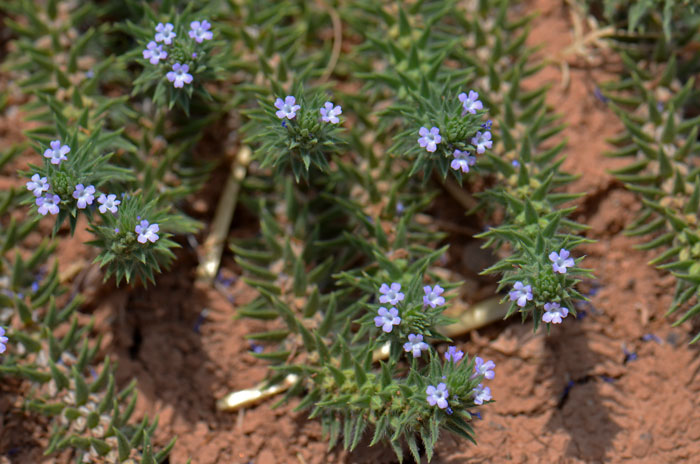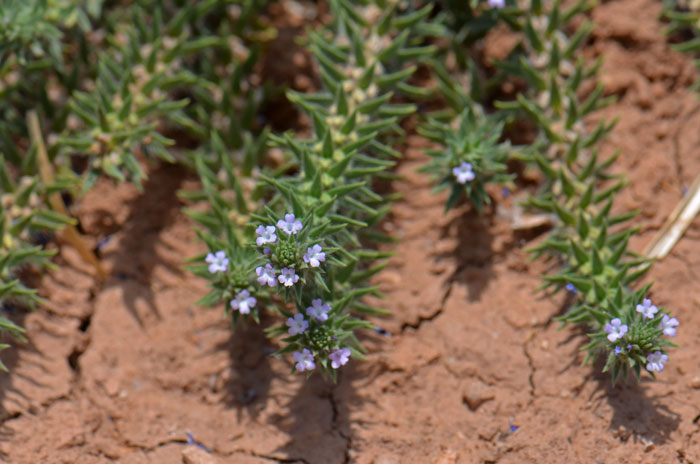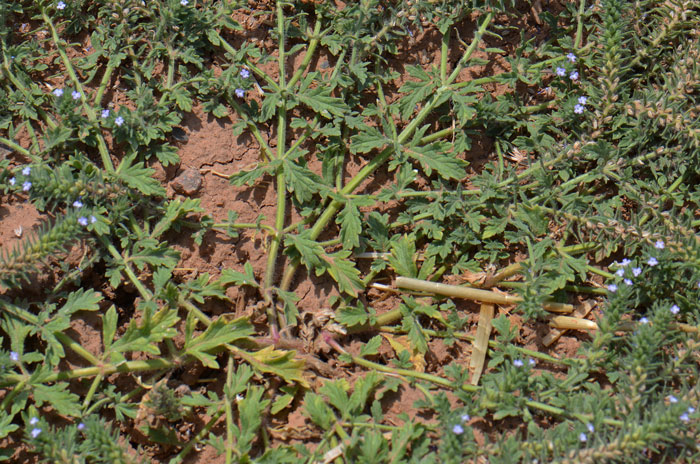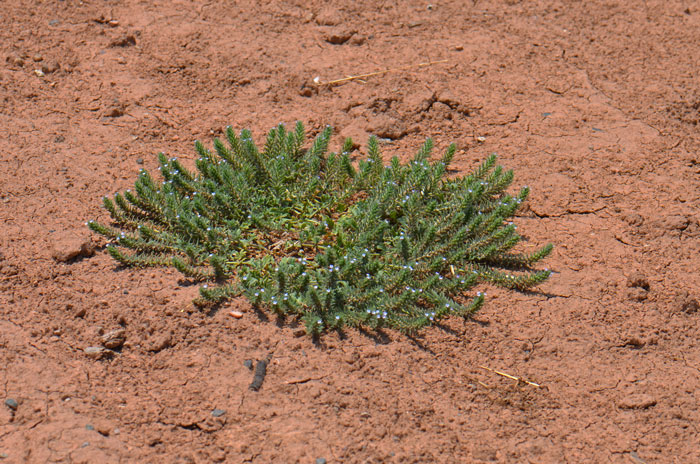Verbena bracteata, Bigbract Verbena




Scientific Name: Verbena bracteata
Common Name: Bigbract Verbena
Also Called: Bracted Vervain, Carpet Vervain, Prostrate Verbena, Prostrate Vervain
Family: Verbenaceae, Verbena or Vervain Family
Synonyms: (Verbena bracteosa, Verbena bracteosa var. brevibracteata, Verbena imbricata, Verbena squarrosa, Verbena subuligera)
Status: Native
Duration: Annual, biennial or perennial;
Size: Up to 12 inches or so.
Growth Form: Forb/herb; low-growing plant; square stems few or many from base; growth form prostrate or decumbent, stems with sparse pubescence.
Leaves: Green; leaves about 2 inches or so, leaf shape oblanceolate, coarsely serrate and pinnately lobed; leaf surface with rough pubescence.
Flower Color: Blue, pale blue, purple, pink or lavender; flowers in spikes or 1 to 4 per branch tips.
Flowering Season: May to September; May to October in California and Texas.
Elevation: 1,000 to 7,500, Arizona and California.
Habitat Preferences: Waste land, roadsides, fields, river bottoms, ponds and lake margins.
Recorded Range: Bigbract Verbena is found throughout the United States.
North America & US County Distribution Map for Verbena bracteata.
U.S. Weed Information: In North America, Verbena bracteata can be weedy or invasive according to the following authoritative sources:
Weeds of Nebraska and the Great Plains;
Weeds of the United States and Canada;
Weeds of the West.
Plants included in this under this category may become weedy or invasive.
Invasive/Noxious Weed Information: No information available.
Wetland Indicator: In North America, Verbena bracteata has the following wetland designations:
Arid West, FAC;
Atlantic and Gulf Coastal Plain, FACU;
Eastern Mountains and Piedmont, UPL;
Great Plains, FACU; Midwest, FACU;
Northcentral & Northeast, FACU;
Western Mountains, Valleys, and Coast, FAC.
FAC = Facultative, occur in wetlands and non-wetlands
FACU = Facultative Upland, usually occur in non-wetlands, but may occur in wetlands
UPL = Obligate Upland, almost never occur in wetlands
Threatened/Endangered Information: No information available.
Genus Information: In North America there are 46 species and 55 accepted taxa overall for Verbena. World wide, The Plant List includes 101 accepted species names and includes a further 181 infraspecific rank for the genus.
In the Southwestern United States: Arizona has 17 species of Verbena, California has 15 species, Nevada and Utah each have 5 species, New Mexico has 13 species, Texas has 21 species. All data is approximate and subject to taxonomic changes.
Comments: Many species in the Verbena genus have be transfered to the genus Glandularia.
Verbena bracteata has been used as a ceremonial medicine and as a dermatological aid by southwestern American indigenous peoples.
Navajo, Ramah Drug, Ceremonial Medicine, Plant used in ceremonial chant lotion.
Navajo, Ramah Drug, Dermatological Aid, Poultice of plant applied to centipede bite.
See ethno-botanical uses at Native American Ethnobotany, University of Michigan, Dearborn.

